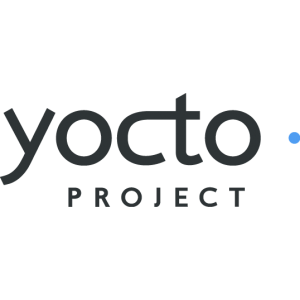Yocto Start Here: Difference between revisions
From Variscite Wiki
No edit summary |
No edit summary |
||
| Line 29: | Line 29: | ||
* Use your pre-built rescue recovery SD-Card, as-is, to boot system, and start applications programming. | * Use your pre-built rescue recovery SD-Card, as-is, to boot system, and start applications programming. | ||
* | * {{Varlink|Yocto Hello World|{{#var:RELEASE_LINK}}|Hello World 'C' application}} | ||
* | * {{Varlink|Yocto QT Hello World|{{#var:RELEASE_LINK}}|Building A QT Hello World}} | ||
* | * {{Varlink|Yocto Programming with Eclipse|{{#var:RELEASE_LINK}}|Debugging with Eclipse}} | ||
* | * {{Varlink|Yocto Setup TFTP/NFS|{{#var:RELEASE_LINK}}|TFTP & NFS}} | ||
* Test various interfaces. | * Test various interfaces. | ||
** [[ | ** [[{{#var:HARDWARE_NAME}} GPIO|GPIO]] | ||
** [[ | ** [[{{#var:HARDWARE_NAME}} Ethernet|Ethernet]] | ||
** [[ | ** [[{{#var:HARDWARE_NAME}} Audio record play|Audio record/play]] | ||
** [[ | ** [[{{#var:HARDWARE_NAME}} Can-bus|Can-bus]] | ||
** [[ | ** [[{{#var:HARDWARE_NAME}} USB Host|USB Host]] | ||
** [[ | ** [[{{#var:HARDWARE_NAME}} eMMC|eMMC]] | ||
** [[ | ** [[{{#var:HARDWARE_NAME}} RTC|RTC]] | ||
** [[ | ** [[{{#var:HARDWARE_NAME}} LVDS|LVDS]] | ||
** [[ | ** [[{{#var:HARDWARE_NAME}} I2C|I2C]] | ||
** [[ | ** [[{{#var:HARDWARE_NAME}} Wireless LAN|Wireless LAN]] | ||
** [[ | ** [[{{#var:HARDWARE_NAME}} Bluetooth|Bluetooth]] | ||
** [[ | ** [[{{#var:HARDWARE_NAME}} Backlight|Backlight]] | ||
** [[ | ** [[{{#var:HARDWARE_NAME}} USB OTG host|USB OTG as host]] | ||
** [[ | ** [[{{#var:HARDWARE_NAME}} USB OTG as device|USB OTG as device]] | ||
** [[ | ** [[{{#var:HARDWARE_NAME}} SPI|SPI]] | ||
** [[ | ** [[{{#var:HARDWARE_NAME}} UART|External UART]] | ||
* Contact Support | * Contact Support | ||
** [http://www.variscite.com/support/variscite-customer-portal '''Variscite Customer Portal'''] <br> Register at Variscite Customer Portal to get high quality engineering support for Variscite products | ** [http://www.variscite.com/support/variscite-customer-portal '''Variscite Customer Portal'''] <br> Register at Variscite Customer Portal to get high quality engineering support for Variscite products | ||
** [http://variscite.com/support-forum/index.php Support forum] | ** [http://variscite.com/support-forum/index.php Support forum] | ||
Revision as of 17:53, 9 May 2017
-First Time? Start Here.
Step One: Read Documentations
Please download and read the development kit documentation on Variscite website
NOTE:
Make sure you read the Quick Start Guide.
Make sure you read the Quick Start Guide.
Step Two: Setup Linux host PC Development Environment
Set up your development environment.
Step Three: Evaluation Kit Power Up
Power up the board.
You should have the serial cable connected to the debug port, as describe in the quick start guide
When board boots, make sure you see the u-boot prints on your host PC hyper terminal. You will need to type-in commands in the command prompt late in the development stages
IMPORTANT:
Don't continue without the serial console operating.
Don't continue without the serial console operating.
Step Four: A quick test with recovery SD-Card
Please follow the below guide to boot Evaluation Kit with a bootable SD-Card, and burn a complete Yocto into SOMs storage (NAND/eMMC)
Step Five: What next?
Your next step can be one of :
- Build a complete Yocto.
This guide will help you build a complete Yocto build, resulting in all required binaries to create a full bootable Yocto SD-Card, and all required binaries to burn to SOM's storage NAND Flash or eMMC.
- Use your pre-built rescue recovery SD-Card, as-is, to boot system, and start applications programming.
- Hello World 'C' application
- Building A QT Hello World
- Debugging with Eclipse
- TFTP & NFS
- Test various interfaces.
- Contact Support
- Variscite Customer Portal
Register at Variscite Customer Portal to get high quality engineering support for Variscite products - Support forum
- Variscite Customer Portal
